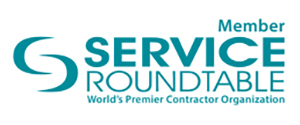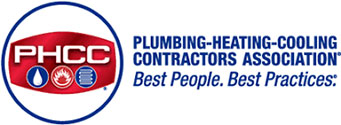Everything You Need to Know About Repiping a House
Are you tired of dealing with constant plumbing issues and costly repairs in your home? Repiping might be the solution you need. In this comprehensive guide, brought to you by Canyon Hills Plumbing, Southern California’s trusted plumbing experts, we’ll explore everything you need to know about repiping a house, from understanding the process to choosing the right materials and hiring a professional. Let’s jump in and uncover how repiping can improve your home’s plumbing system and save you money in the long run.
Key Takeaways
- Repiping is the process of replacing existing plumbing to address damages and improve efficiency.
- Hiring a professional plumber like Canyon Hills Plumbing or undertaking DIY repiping requires careful consideration of factors such as size, layout, material selection, and accessibility.
- Comparing quotes from multiple plumbers can help optimize repiping costs.
Before you start a repiping project, understanding the process and knowing when it’s time to consider it for your home is vital. Here, we’ll unpack the details of the repiping process.
Understanding the Repiping Process
Repiping a house involves swapping out old plumbing pipes with new ones. It’s vital in regions like Southern California due to some areas’ unique water conditions like hard water and older housing infrastructure. It becomes necessary when the existing pipes age, corrode, or sustain damage, which requires replacement to heighten the system’s efficiency and fix leakages.
Generally, it’s recommended to evaluate the need for repiping when existing plumbing pipes are more than 40 years old, like we often see throughout the Temecula Valley in cities like Sun City, Canyon Lake, Menifee, Winchester, Hemet, and Moreno Valley, or if there are indications of corrosion or damage.
The most commonly used piping materials for repiping include copper pipes, PEX pipes, and CPVC pipes, and this process can address various plumbing issues, such as:
- corroded pipes
- low water pressure
- discolored water
- recurring leaks
Why Repipe a House?
The need to repipe a house arises to tackle issues like leaks, corrosion, and substandard water quality, subsequently preventing potentially expensive repairs down the line. Replacing old pipes with new ones can improve water pressure, eliminate foul odors, and ensure clean and safe drinking water.
Another reason to repipe a house is to replace old, hazardous materials like lead and galvanized steel pipes. Lead pipes can cause health concerns when lead is present in the water supply, while galvanized steel pipes are prone to corrosion, may limit water flow, and can introduce sediment into the water supply. Repiping your home with safer and more reliable materials can safeguard your family’s health and prevent future plumbing issues.
When to Consider Repiping
Consider repiping when you encounter persistent plumbing problems such as:
- Regular leaks in various parts of the house, including leaking pipes
- Pipe degradation from rust
- Low water pressure
- Discolored water
- Strange sounds coming from the pipes
- Issues with your sewer or septic system
Additionally, if you’re undergoing a major home remodel, it’s an opportune time to repipe, as walls and floors may already be exposed, making the process easier and more cost-effective. Don’t wait until you’re dealing with extensive repairs or water damage to consider repiping. Being proactive can save you time and money in the long run.
Factors Affecting Repiping Costs
Repiping a house can have varying costs based on numerous factors. If you want to make an informed decision, it’s important to grasp how the house’s size and layout, choice of pipe material, and pipe accessibility can influence the total repiping expense. Let’s explore these factors in more detail.
Size and Layout of the Home
Given their unique designs, larger homes with complex layouts in Southern California neighborhoods might entail higher repiping costs.
Additionally, the number of plumbing fixtures in the home can affect the project’s total cost. It’s crucial to consider the size and layout of your home when estimating repiping costs to ensure you’re prepared for the financial investment.
Accessibility and Location of Pipes
The location and accessibility of pipes are substantial factors in repiping costs. Hard-to-reach pipes demand more time and effort for replacement, driving up labor costs.
The location of pipes can also influence the cost and complexity of the repiping project. Lines located in closets or crawl spaces may be more challenging to access and repair, resulting in higher repiping costs.
Understanding the accessibility and location of your home’s pipes can help you anticipate potential challenges and costs associated with repiping.
Pipe Material Selection
Choosing a pipe material, be it copper, PEX, or CPVC, significantly affects the total repiping cost. Each material has advantages and disadvantages that can impact the project’s overall cost. Canyon Hills Plumbing often recommends the following materials for Southern California homes:
Copper Pipes
Copper pipes are highly sought after when repiping due to their strength and reliability. They offer excellent resistance to bacteria, and their lifespan is much longer than other materials. However, copper pipes can be expensive to install and are more susceptible to theft due to their high value. Copper piping is a popular choice for many homeowners and contractors alike.
While the upfront cost may be higher, the benefits of using copper pipes, such as improved water quality and a longer-lasting plumbing system, can outweigh the initial investment in the long run.
PEX Pipes
PEX or cross-linked polyethylene pipes are another popular choice for repiping projects. They offer flexibility, corrosion resistance, and are less prone to bursting in freezing temperatures. Additionally, PEX pipes are more affordable than copper pipes and are easier to install, making them an attractive option for homeowners on a budget. However, PEX pipes may be susceptible to rodent damage and can be affected by UV light.
CPVC Pipes
CPVC, or chlorinated polyvinyl chloride, pipes are an affordable and easy-to-install option for repiping. They offer corrosion resistance and eliminate the need for welding, making them a popular choice for many homeowners.
CPVC pipes may be less flexible than other materials like PEX and have a lower temperature limit, which could impact their suitability for high-temperature applications.
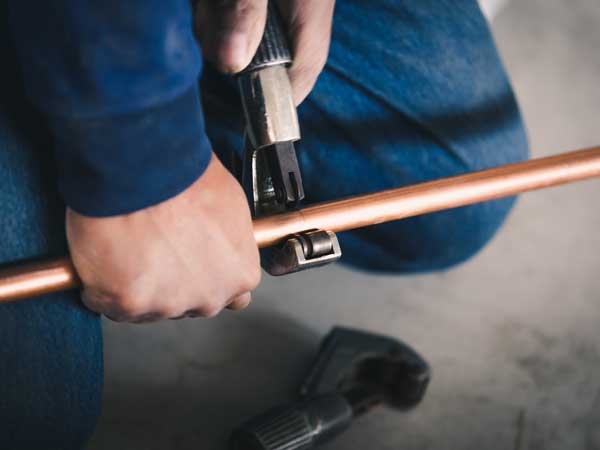
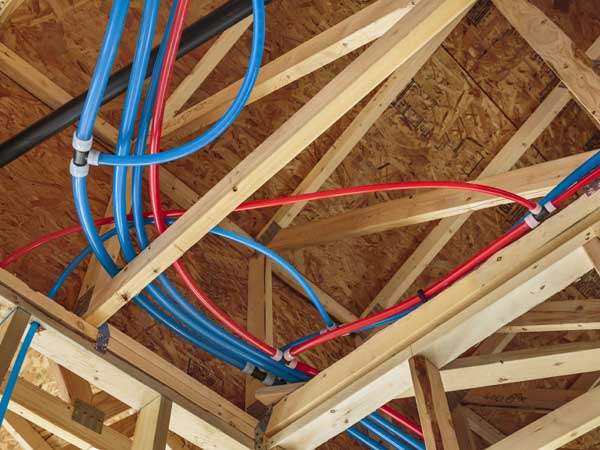
Preparing for a Repiping Project
Starting with Canyon Hills Plumbing ensures you have local experts on your side. Get an inspection and free estimate from us to understand the scope and costs involved. And plan for minimal disruptions, considering the unique layouts of Southern Californian homes.
Getting an Inspection and Estimate
Before you kick off a repiping project, it’s necessary to get an inspection and quote from a certified plumber. This will help you understand the scope of the project, identify any potential trouble areas that may require pipe replacement, and get a clear idea of the costs involved. Additionally, getting multiple quotes from local plumbers can help you find the best price and service for your repiping project.
Planning for Disruptions
During the repiping process, it’s likely that walls and floors will need to be opened to access the pipes, which may cause disruption to your home. To minimize disruptions, clear the area around the pipes and remove any furniture or artwork from the walls.
Additionally, discuss with the plumber any measures they can take to minimize the amount of time without running water, as this can be inconvenient during the repiping process. By taking these steps, you can help ensure a smoother repiping project and minimize the impact on your daily life.
Hiring a Professional vs. DIY Repiping
Choosing between employing a professional plumber and undertaking a DIY repiping project can be tough. While hiring a professional can ensure proper installation and reduce the risk of mistakes, it can also be more expensive than a DIY project.
Hiring a Professional for Your Repiping Project
Hiring a professional plumber for your repiping project guarantees:
- Accurate installation
- Minimizes the likelihood of errors
- Professionals have the experience, tools, and knowledge to complete the job efficiently and accurately.
Additionally, they can troubleshoot any issues that may arise and guarantee the quality of their work. However, hiring a professional can be more expensive than taking on a DIY project, so weighing the benefits against the costs is essential.
Risks and Challenges of DIY Repiping
Although DIY repiping or choosing the cheapest plumber might cut down labor costs, comprehending the associated risks and challenges is crucial. You need to have the necessary skills, tools, or expertise to avoid difficulties during the project, leading to costly mistakes and even damage to your home.
Additionally, improper installation can result in leaks, water damage, and other complications that can be expensive to rectify. Before attempting a DIY repiping project, be honest with yourself about your skill level and the potential risks you’re willing to take.
Tips for Saving Money on Repiping
Navigating a repiping project can be daunting, but with the right strategies, you can ensure both cost-effectiveness and quality results. Here are some essential tips to help you make the most of your budget.
- Compare Multiple Quotes: Always gather and compare quotes from several plumbing contractors. While it’s tempting to go with the cheapest offer, ensure that the chosen quote reflects quality workmanship and a competitive price.
- Understand Pipe Material Costs: The price of pipe materials can vary greatly. Copper, for example, might be pricier than PEX or CPVC. However, weighing the long-term benefits against the initial investment is crucial. Spending a bit more upfront can save you from frequent repairs in the future.
- DIY Some Tasks: While the repiping itself requires expertise, you can save money by handling peripheral tasks yourself, such as clearing access areas, painting, or re-insulating pipes after the job is done.
- Reevaluate Necessity: Before starting, assess which areas of the home genuinely need repiping. Sometimes, only specific sections may need an overhaul, which can reduce the overall costs.
- Seek Recommendations: Talk to friends or neighbors who have undergone repiping. They might know contractors who offer good deals or share insights on how to cut costs without compromising quality.
- Warranties and Guarantees: Opt for contractors who offer warranties on their work. While this might not save money upfront, it can protect against potential future costs if issues arise post-installation.
Remember, the key to saving money on repiping is a combination of informed choices, smart shopping, and efficient planning. By being proactive and doing thorough research, you can ensure a cost-effective and successful repiping project.
Protect Your Home with Expert Repiping Services
Repiping is crucial for Southern Californian homes to ensure safety and increase value. With the guidance of Canyon Hills Plumbing, you’re assured of top-notch local expertise. Contact us today for a free estimate and to safeguard your home’s plumbing infrastructure.
Some Frequently Asked Questions About Repiping
Is it worth it to repipe your house?
Considering the potential market value of your home, repiping may be worth it in the long run. It could prevent a liability if you choose to sell and provide an advantage over homes with older plumbing.
What is the meaning of repiping?
Repiping involves replacing the old pipes in a home or building with new plumbing systems, usually including removing the existing pipe and installing the new one.
How much does it cost to repipe a 2000 square foot house?
Repiping a 2000 square foot house can cost between $3,100 and $7,500, depending on various factors, including pipe location, number of bathrooms, quantity of fixtures, and how many stories the home includes. Please note it is only possible to provide an accurate price quote by inspecting your home and discussing your needs.
When should a house be Repiped?
If your pipes have been experiencing clogs, poor water pressure, frequent leaks, corrosion, and rust-colored water, or if your home is over 40 years old, consider repiping your house.
Limited Time Offer: No Payments, No Interest for 6 Months*
Call (888) 970-7550 for details and to schedule Your FREE In-person estimate*.
Ask Us About Our Senior discounts, Veteran discounts, Military discounts, Law Enforcement discounts, First responder discounts, and Teacher discounts. *Some restrictions apply and cannot be combined with any other offers or discounts.
Trusted Professionals
Licensed & Insured Plumbers
CA Lic.#1010329, C-36 Plumbing Contractor and C-42 Sanitation Contractor.
✅ For your trust and safety you can verify our CA Contractor license & classifications HERE

